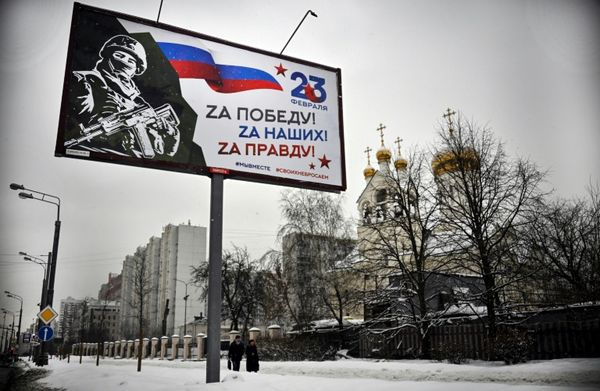
Airlines are adding staff and cutting flights in an effort to avoid upheaval as both customer demand and labor shortages persist.
JetBlue Airways Corp. this weekend said it would reduce flights in May and throughout the summer due to staffing limitations, after canceling more than 300 flights over the weekend. Alaska Air Group Inc. last week said it would trim spring flying to catch up on pilot training. Meanwhile, other carriers including American Airlines Group Inc. say they are prepared for the summer surge after a monthslong hiring spree.
Carriers say they are taking seriously the lessons of last summer, when operations were strained due to booming demand. With staffing thin, many airlines were unable to recover quickly from what should have been routine disruptions such as poor weather. Travelers faced cancellations, delays and hourslong waits for customer service help by phone.
“We are very focused on maintaining our resilience," said David Seymour, chief operating officer of American. “We’re not letting our guard down."
American earlier said it planned to hire about 180 pilots a month this year, and Mr. Seymour says that schedule is on track, with more than 600 hired so far through the end of March. His team has homed in on supply chains to make sure that issues like catering shortages don’t trip up flights and lead to delays.
“Two years ago, three years ago, I’m not sure it would ever surface to the COO level because you just took it for granted," he said. “I have teams dedicated to looking at everything. I mean, from stir sticks to napkins, to pillows and blankets to headsets."
Airlines executives say bookings exceed expectations, despite soaring fuel costs that are pushing ticket prices higher. Summer schedules haven’t been completed and are still fluctuating, but U.S. airlines currently plan to fly about 16% more seats than last summer, according to data from Cirium.
“The operations staffing will be on a razor’s edge," said Tim Donohue, co-founder of Aerology, a startup that works to predict flight disruptions. “The razor’s edge barely works when things go as scheduled."
Covid-19 still looms large. At the start of the year airlines canceled thousands of flights as Omicron infections ripped through their workforces. Airlines in the U.K. have been hit by a similar wave of infections this month, forcing flight cancellations. That could happen again if U.S. case rates surge once more.
Carriers say they have spent months hiring staff, including pilots, flight attendants, gate agents, ramp workers and customer-service representatives.
Spring break travel has provided the first tests of the industry’s readiness, and there have been some signs of strain.
This weekend, JetBlue canceled 18% of its flights Saturday and 13% Sunday. The airline said it was trying to get its operation back on track after bad weather last week and to be proactive.
Despite hiring more than 3,000 new crew members this year, JetBlue is still understaffed in some areas, it says. The airline is expecting record numbers of travelers this summer, but the schedule it set out months ago to meet that demand is proving too ambitious, President Joanna Geraghty wrote in a memo to staff.
JetBlue plans to cut flying by 8% to 10% in May and by similar levels through the summer, Ms. Geraghty wrote.
“Based on your feedback that the schedule is wound too tight, we know the best plan is to reduce capacity now," she wrote.
Severe storms that lingered over Florida earlier this month and prompted airspace restrictions also upended airline operations. While most airlines were back on schedule within a few days, some struggled to get on track. Unions said flight attendants faced hourslong waits to find transportation and hotels.
Some flight attendants were forced to sleep in airports, unions that represent flight attendants at American and Southwest said.
In a letter to top Southwest executives, Lyn Montgomery, president of the union that represents Southwest’s flight attendants, wrote this past week: “The current work environment is not just unstable but chaotic."
A Southwest spokeswoman said the snafu was due to fully booked hotels in Florida, where crews were stuck, and that it is working to improve contingency planning.
An American spokeswoman said the airline was aware of the issue and has been working to improve.
In an effort to make sure it has enough flight attendants working, JetBlue is offering a $1,000 bonus to flight attendants who don’t call out of work through May 31 and an extra $100 per trip for flight attendants who pick up open trips on days off, according to a memo to crew.
Southwest raised starting wages to at least $17 an hour and no longer requires that most airport workers have a high-school diploma. Some 15% to 20% of new hires don’t show up on their first day for some roles, said Greg Muccio, the airline’s senior director of talent acquisition. “We were sort of shocked by it. We’ve just had to adjust," he said.
The airline says it expects to be able to hire sufficient workers to fly its June schedule.
Pilots at Alaska, Delta Air Lines Inc., and American have all picketed in recent weeks, complaining that the airlines have built schedules with little margin for error, leaving pilots overworked and fatigued.
“We continuously evaluate our staffing models and plan ahead so that we can recover quickly when unforeseen circumstances arise," a Delta spokesman said.
Competition for pilots among airlines has been fierce. The Southwest Airlines Pilots Association, the union that represents Southwest’s pilots, said in some recent new-hire classes, roughly 10% of the pilots have quit. Southwest said that its attrition rate in initial first-officer training classes since December has been 3% but that applicants are in some cases accepting other offers during recruiting or before starting initial training. The union that represents pilots at Alaska Air said it has seen record levels of attrition.
Alaska blamed a staffing shortage for cancellations of roughly 10% of its flights last weekend.
The airline said Thursday that it would trim flying by about 2% through the end of June. Alaska said it had 63 fewer pilots ready to fly in April than it had planned for in January when it set its schedule.
Pilot training has also become a bottleneck as airlines don’t always have enough flight instructors or simulators to handle the massive influx. Southwest has had to trim back its plans for hiring first officers as it works to recruit more flight instructors. Alaska said it has dedicated a team to make sure it is keeping up with pilot training and not letting the schedule get out of sync with the number of pilots it has.
“The choke point has been in getting everyone trained as we’ve ramped the airline back up and returned aircraft to service throughout the pandemic," Spirit Airlines Inc. Chief Executive Ted Christie said at an industry gathering. “We’re getting there."
This story has been published from a wire agency feed without modifications to the text







